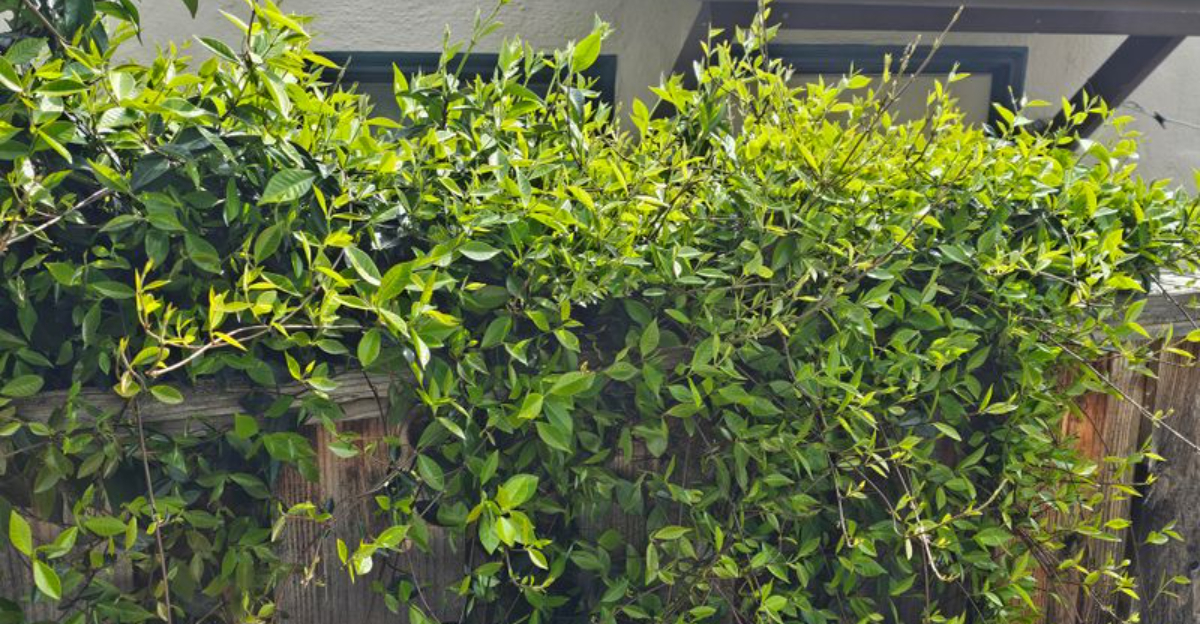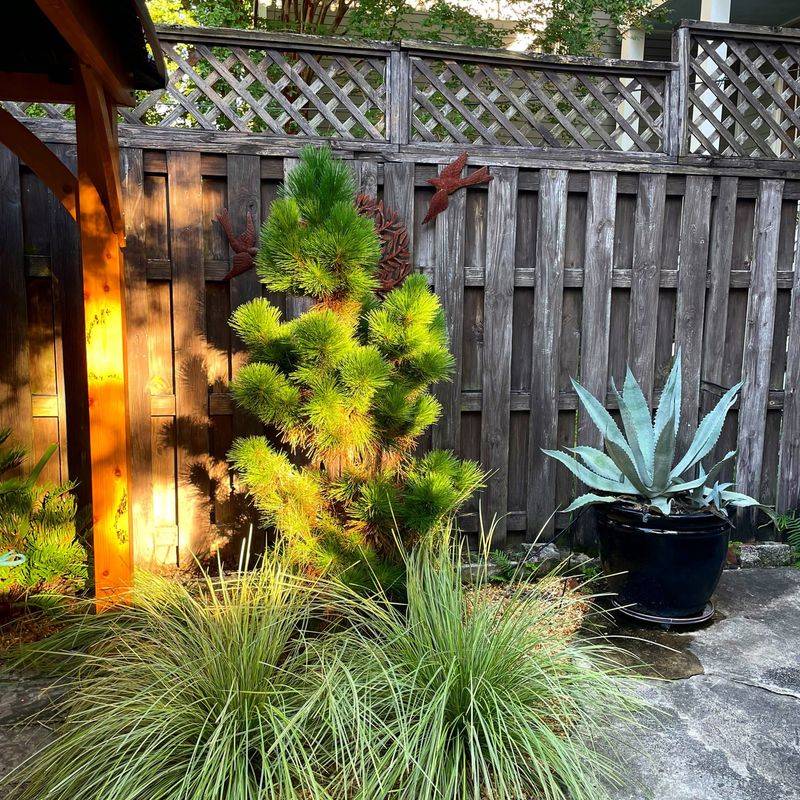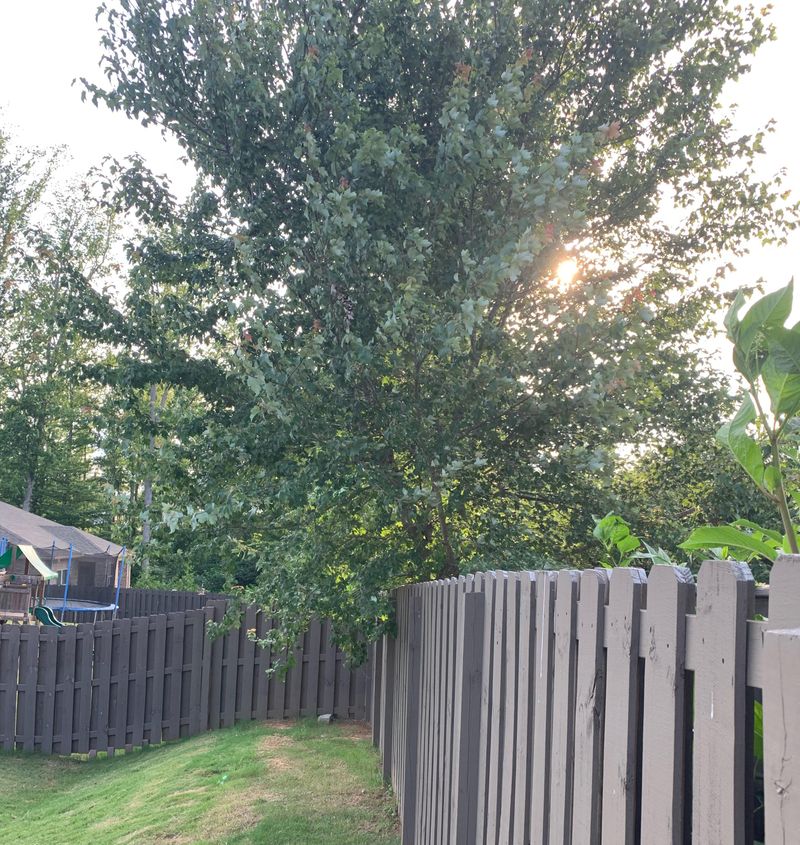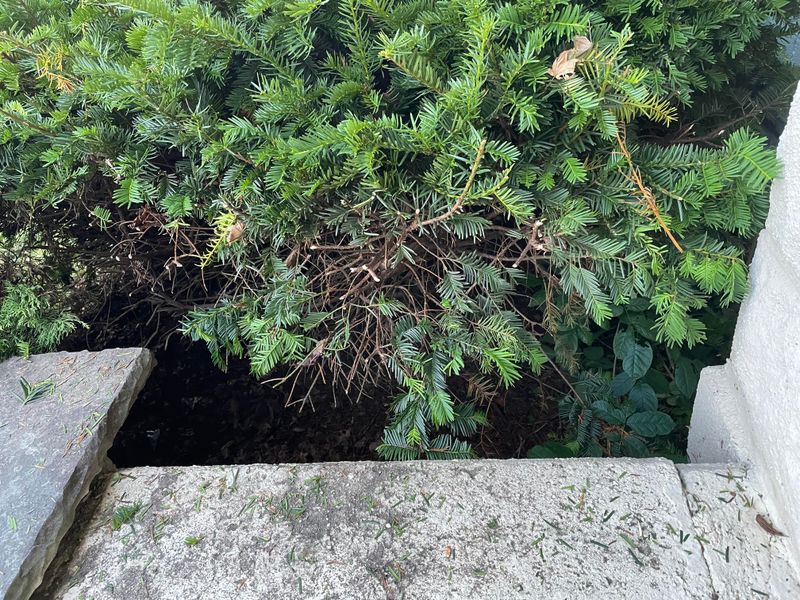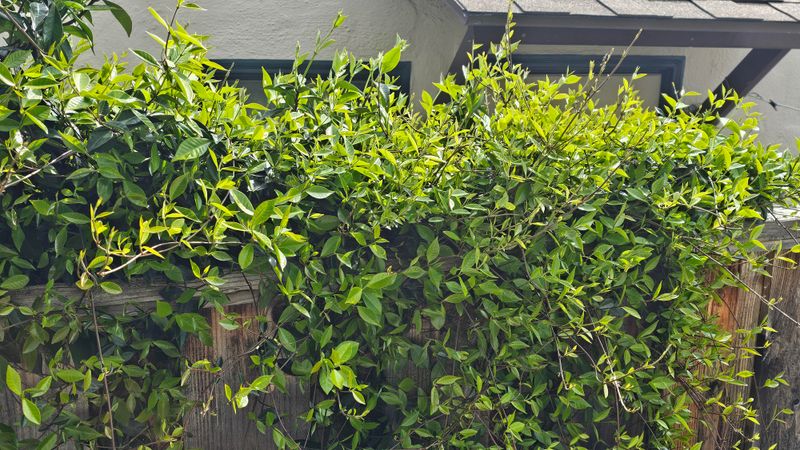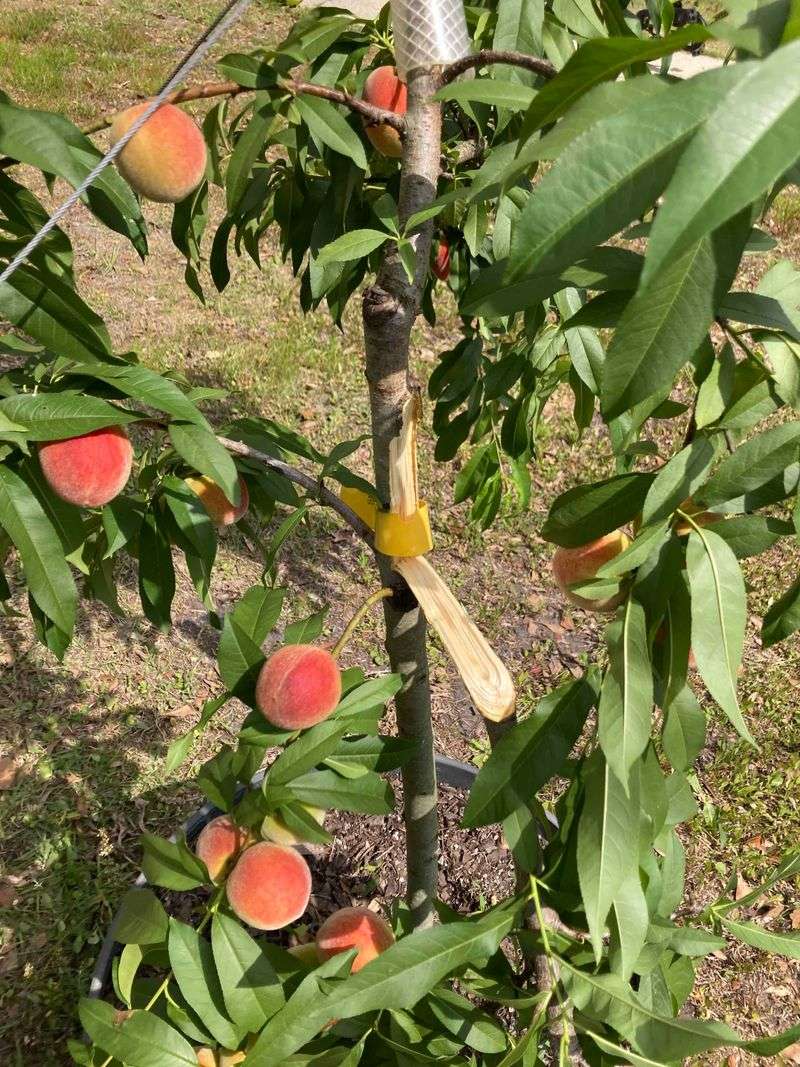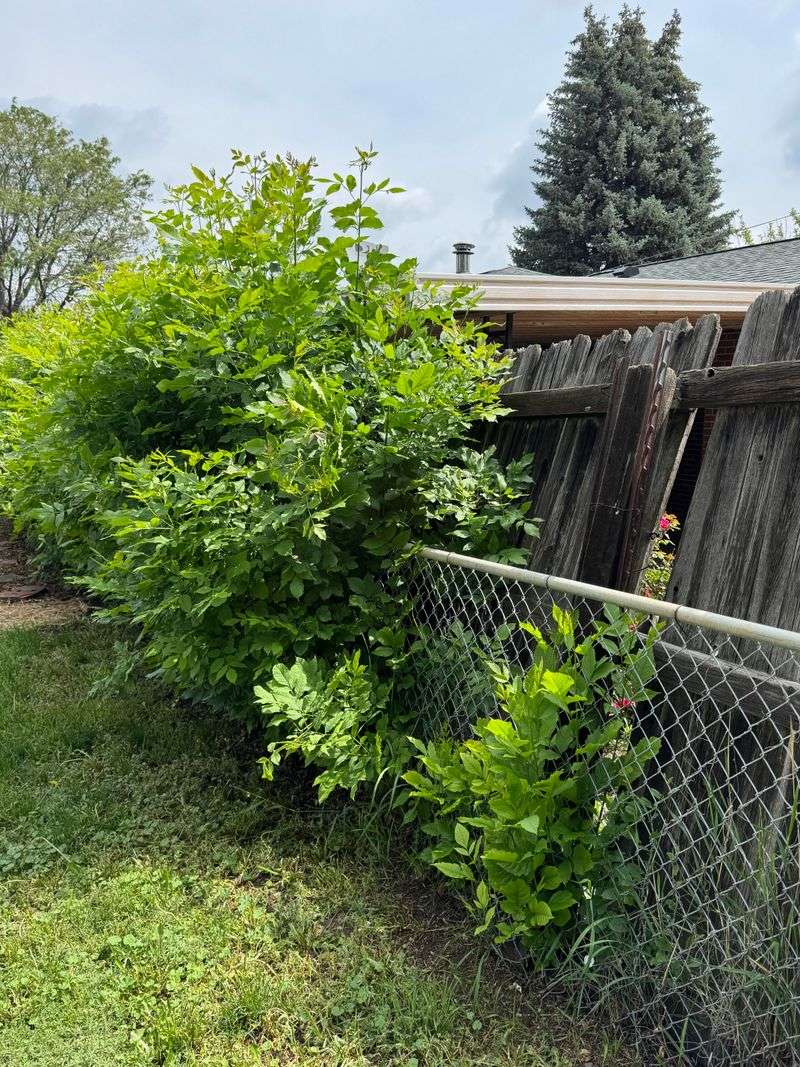A simple branch that crosses a property line can spark more arguments than a fallen tree.
Many assume the rules stay vague, yet the law spells out clear limits that shape every decision. A homeowner gains some rights, but not all power.
One wrong cut can trigger conflict, while the correct approach keeps the peace.
Anyone who deals with a neighbor’s unruly growth should know the boundaries before the next trim takes place. A little knowledge saves plenty of trouble.
Property Line Rights Give You Control
Michigan law gives property owners clear rights when it comes to branches crossing over their property lines.
You actually have the legal authority to trim any branches that extend onto your side of the fence or boundary marker.
This right exists whether the branches are from trees, bushes, or shrubs.
The law recognizes that your property is your space to maintain and enjoy.
When branches invade that space, they can cause real problems like blocking views, damaging structures, or creating maintenance headaches.
Courts have consistently supported homeowners who take reasonable action to protect their property from encroaching vegetation.
However, this right comes with important limits.
You can only cut the portions that cross onto your land.
Going beyond the property line to trim branches on your neighbor’s side would be trespassing and could lead to legal trouble.
Always know exactly where your property line sits before picking up those pruning shears.
Taking photos before you start trimming provides helpful documentation.
Measuring from survey markers ensures you stay within your legal boundaries.
Being certain about property lines prevents disputes and keeps everything legal and neighborly.
Responsibility For Trimming Falls On You
While you have the right to trim overhanging branches, Michigan law does not require your neighbor to do the work for you.
Property owners are generally not legally obligated to trim vegetation that crosses boundary lines unless a specific ordinance or homeowner association rule says otherwise.
The burden of maintenance falls on the person bothered by the branches.
Many people assume their neighbor must automatically fix the problem, but that is not how the law works in most cases.
Your neighbor might not even realize their shrubs are causing you trouble.
Communication often solves these situations faster than legal action ever could.
Before grabbing your tools, consider having a friendly conversation.
Your neighbor might be happy to trim the branches themselves or split the cost of hiring a professional.
Building goodwill matters more than being technically right, especially when you share a fence line for years to come.
If talking does not work, you still have the right to handle the trimming yourself.
Just remember to stay on your side of the property line.
Document everything if you think the situation might escalate into a bigger dispute later on.
Damage To The Plant Could Mean Liability
Cutting branches seems simple, but doing it wrong can seriously harm or even kill a shrub or tree.
Michigan courts have ruled that property owners can be held liable if their trimming causes significant damage to a neighbor’s plant.
This means you could end up paying for the value of a damaged shrub if you are not careful.
Plants have specific needs when it comes to pruning.
Cutting too much, trimming at the wrong time of year, or making improper cuts can stress the plant beyond recovery.
Some species are particularly sensitive to pruning, and removing too many branches can destroy their natural shape or health.
Using proper pruning techniques protects both you and the plant.
Make clean cuts at appropriate angles, avoid removing more than necessary, and consider the plant’s growing season.
If you are unsure about how to proceed, consulting with a professional arborist or landscaper makes good sense.
Taking before and after photos documents your work and shows you acted reasonably.
If the plant withers later and your neighbor blames you, this evidence proves you trimmed carefully.
Protecting yourself legally while respecting living plants creates the best outcome for everyone involved in the situation.
Local Ordinances May Add Extra Rules
Beyond state law, your city or township might have additional regulations about trimming vegetation near property lines.
Local ordinances sometimes require permits for cutting certain types or sizes of plants.
Other communities have rules about disposing of yard waste or working near utility lines.
Checking with your local government before starting any trimming project saves headaches later.
A quick call to your city clerk or zoning office clarifies what rules apply in your specific area.
Some communities have surprisingly detailed requirements that most residents never know about until they run into problems.
Homeowner associations add another layer of rules if you live in a planned community.
HOA covenants often include strict guidelines about landscaping, maintenance, and property appearance.
Violating these rules can result in fines even if you followed state law perfectly.
Protected species present another consideration.
Michigan has laws protecting certain native plants, and some communities add their own environmental protections.
Cutting a protected plant, even on your property, could lead to significant penalties.
Researching before cutting prevents expensive mistakes and legal complications down the road.
Nuisance Laws Provide Additional Options
When overhanging branches cause real problems beyond just being annoying, Michigan nuisance laws might come into play.
A legal nuisance occurs when something substantially interferes with your ability to use and enjoy your property.
Branches that damage your roof, clog your gutters repeatedly, or create genuine safety hazards could qualify.
Proving a nuisance requires showing actual harm, not just minor inconvenience.
Courts look at factors like how severe the problem is, how long it has continued, and whether the interference is unreasonable.
Occasional leaves falling into your yard probably would not count, but branches damaging your house might.
If you can establish a legal nuisance, you gain additional remedies beyond simple trimming rights.
You might be able to sue for damages to cover repair costs or force your neighbor to address the problem.
Some situations even allow for injunctions that legally require your neighbor to maintain their plants properly.
Going the legal route should be a last resort after communication fails.
Lawsuits damage relationships and cost money regardless of who wins.
Most neighbor disputes settle more happily through conversation, compromise, and mutual respect than through courtrooms and lawyers.
Fruit And Flowers Belong To The Tree Owner
An interesting twist in Michigan property law involves who owns fruit, flowers, or other products from overhanging branches.
Even when branches extend onto your property, the plant itself and everything it produces still belongs to your neighbor.
Taking fruit from overhanging branches technically counts as theft under the law.
This rule surprises many people who assume that anything hanging over their property belongs to them.
The reasoning is that the plant remains rooted in your neighbor’s soil, so they retain ownership of the entire organism including its products.
Branches crossing the property line do not change this ownership.
However, once fruit naturally falls onto your property, it generally becomes yours.
The key word is naturally—you cannot shake branches or deliberately cause fruit to fall.
Anything that drops on its own accord becomes part of your property just like leaves or twigs.
Being neighborly often matters more than strict legal rights.
Many neighbors happily share produce from overhanging fruit trees or flowering plants.
A friendly conversation about sharing the harvest builds community relationships much better than arguing over who legally owns a few apples or berries.
Documentation Protects Your Interests
Before you start any trimming project involving a neighbor’s plants, creating thorough documentation protects you from future disputes.
Taking clear photographs of the overhanging branches from multiple angles shows exactly what crossed your property line.
Include shots that show the property boundary markers or fence line for context.
Written communication with your neighbor creates an important paper trail.
Sending a polite letter or email explaining your intentions gives them notice and opportunity to respond.
If they object or want to handle the trimming themselves, you have that in writing.
If they agree or do not respond, you also have that documented.
Keeping receipts for any professional services you hire proves what you spent on the project.
If you later need to pursue a nuisance claim or defend against damage accusations, these records become valuable evidence.
Detailed notes about when you did the work and what methods you used help too.
Survey documents showing exact property boundaries are worth their weight in gold during disputes.
If you do not have a recent survey, getting one before major trimming projects makes sense.
Knowing precisely where your property ends prevents accidentally crossing the line and turning from victim to trespasser in legal terms.

